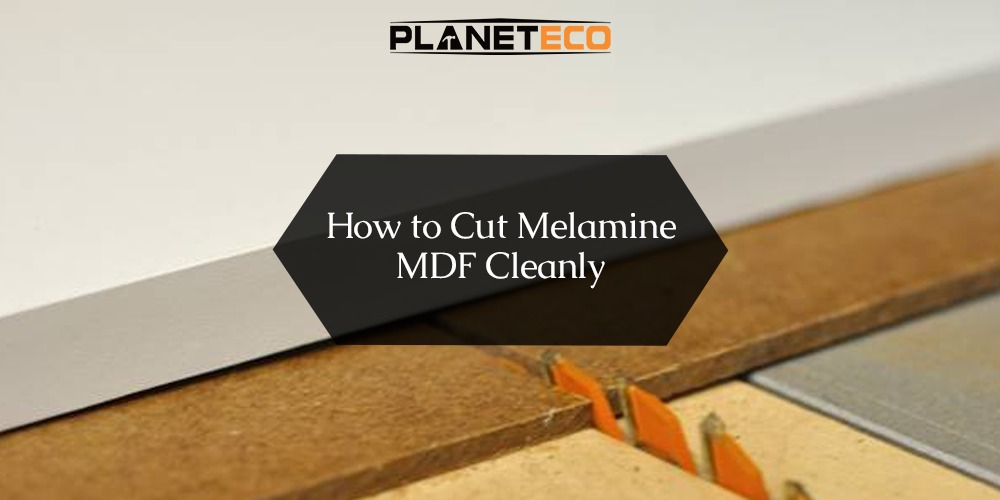Cutting melamine MDF sounds easy until you end up with rough edges and irritating chips. Melamine is basically MDF (medium-density fiberboard) with a hard plastic layer. That shiny surface is infamous for chipping during cuts. But don’t worry. With the right prep and a few pro tricks (just like the experts at Planeteco, UAE’s trusted building materials supplier, you can make clean, crisp cuts every time.
Tools You’ll Need
The Right Saw
You don’t need a whole woodworking shop, but having the right saw helps. A table saw is the top choice for accuracy. A circular saw with a guide rail or track saw works great, too, especially for larger panels.
Specialized Blades
Forget irregular edges. You need a fine-tooth carbide-tipped blade. Look for blades labeled “for laminate” or “melamine.” More teeth = cleaner cuts. Pro tip from Planeteco: always invest in a premium blade. Your edges will thank you.
Safety Gear
This one’s non-negotiable. Wear protection goggles, a dust mask, and ear protection. MDF dust is no joke, and protecting yourself is key to a clean and safe job.
Preparing the Melamine MDF
Measuring and Marking
Use a pencil or fine marker and a straight edge. Double-check all measurements once you cut; there’s no going back.
Taping the Cut Line
Apply masking or painter’s tape over the cut line. This helps hold the melamine surface together and reduces chip-out.
Supporting the Board Properly
Support the entire board, especially if it’s large. Use sawhorses or a sacrificial board underneath to keep it flat and stable.
Best Cutting Techniques
Scoring Before the Cut
Lightly cut the cut line with a utility knife before sawing. This breaks the surface coating and helps the blade cut without pulling up chips.
Cutting with the Finished Side Down (or Up?)
Here’s the trick:
- Table saw: Finished side up
- Circular saw: Finished side down
This way, the cleanest part of the cut is on the visible side.
Using Zero-Clearance Inserts
These custom throat plates around your blade leave no gap for slivers to escape into. It’s a secret weapon for crisp edges.
How to Minimize Chipping
Why Chipping Happens
The blade grabs the melamine layer and rips it up. Simple physics but frustrating results.
Blade Quality and Cut Speed
A dull blade and a fast cut are a recipe for disaster. Go slow and steady with a sharp, fine-tooth blade.
Clean Entry and Exit Strategies
Start cuts slowly and let the blade ease out gently at the end. Don’t yank or twist the board mid-cut.
Using a Table Saw
Blade Height Tips
Set the blade just above the surface, around ⅛ inch higher. Too high, and you’ll chip. Too low, and you’ll burn the wood.
Fence Alignment and Pressure
Keep your rip fence parallel and apply even pressure while feeding the board. Don’t shove glide it through.
Pushing Techniques
Use a push stick to keep your hands safe and pressure even. This ensures a steady cut without wobble.
Using a Circular Saw or Track Saw
Guiding Rail Setup
Use a guide rail or a clamped straight edge. Wavy cuts are way more likely to chip.
Blade Direction and Cut Line Tape
Remember: finish side down when using a circular saw. Keep tape on both sides of the line for added protection.
Clamp Techniques
Clamp the board securely, and don’t let it shift mid-cut. Even a small jiggle can wreck your edge.
Scoring With a Utility Knife
When It Works Best
For small, simple cuts, scoring works wonders. It’s quiet, clean, and chip-free if you go slow.
Double-Cut Method
Score the cut line first, then make a surface initial pass with your saw before going through fully. It’s like opening a zipper.
Advanced Tips for Professionals
CNC Machine Options
If you’re doing this often, a CNC router is your friend. Computer-controlled precision = zero chipping.
Edge Banding After Cutting
Use edge lining to cover basic edges and give your project a polished, pro look, something Planeteco recommends for all premium-grade furniture work in the UAE.
Sanding and Touch-Ups
Light sanding with fine-grit paper smooths out rough edges. Please don’t overdo it, or you’ll eat into the surface.
Common Mistakes to Avoid
Using Dull Blades
Chipping’s #1 cause? Dull blades. Always check your blade sharpness.
Rushing the Process
Slow is smooth, and smooth is fast. Let the blade do the work, don’t force it.
Not Supporting Both Sides
Gravity is not your friend here. Unsupported panels will splinter or bend.
Bonus: How to Fix a Chipped Edge
Filler Tricks
Use wood filler that matches the color, then sand lightly for a smooth repair.
Using Edge Tape
Iron-on-edge tape can cover up small chips and instantly upgrade the look with another tip straight from the Planeteco wood product experts.
Conclusion
Cutting melamine MDF cleanly doesn’t have to be a nightmare. With the right tools, a little prep, and a steady hand you’ll get perfect cuts that look machine-made. Whether you’re doing DIY cabinetry or professional furniture, these tips can save you time and save your project from turning into a chipped mess. For high-quality melamine MDF in the UAE, Planeteco offers top-grade boards and accessories tailored for clean, professional results.

